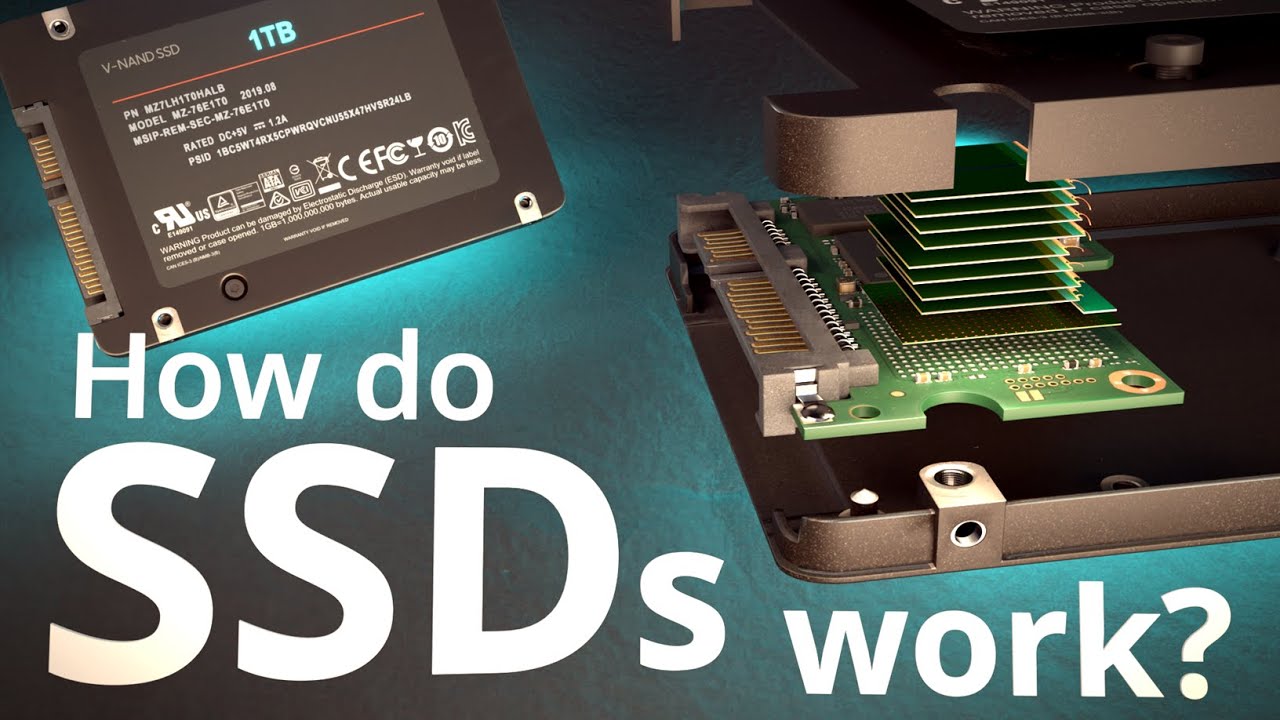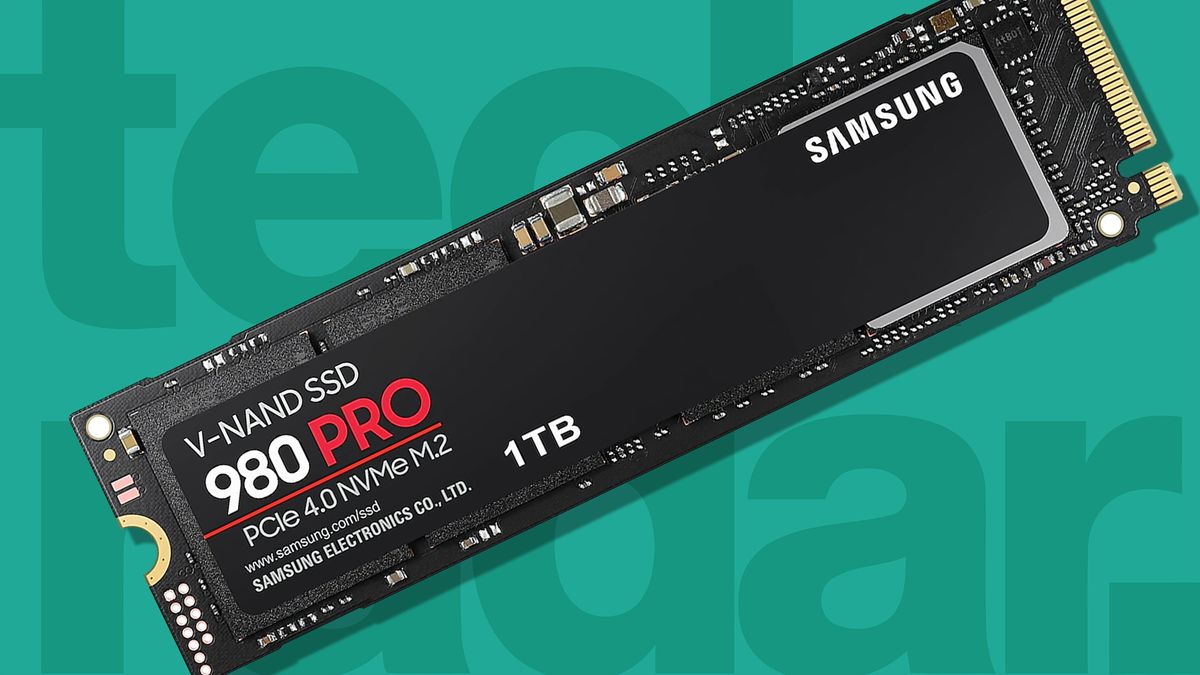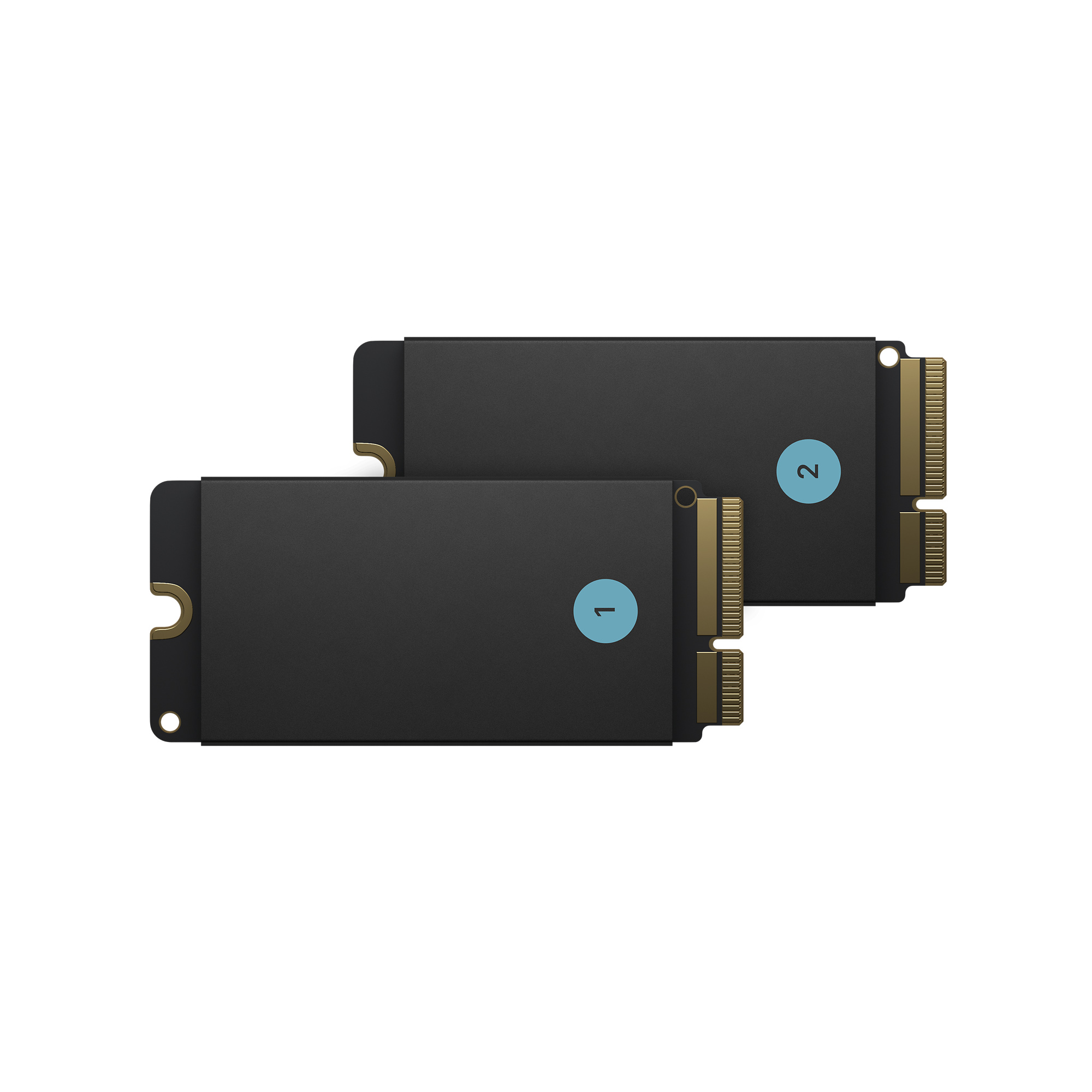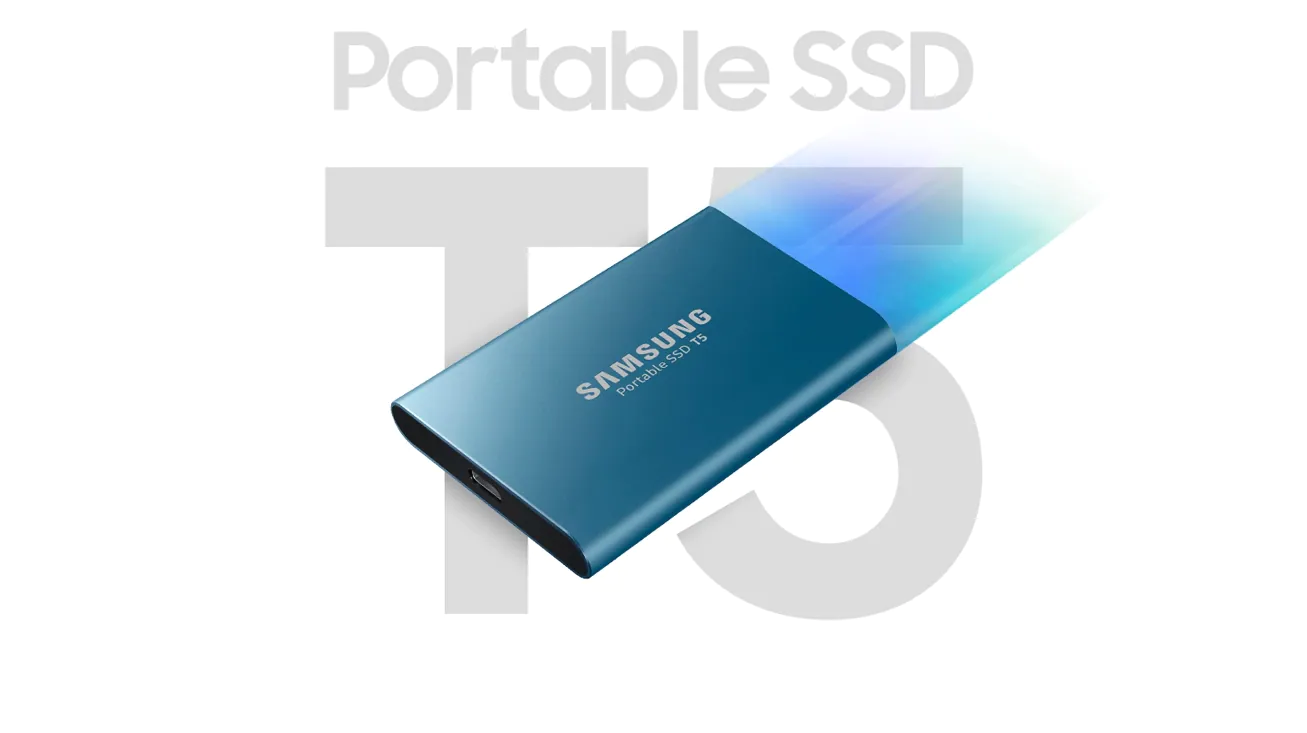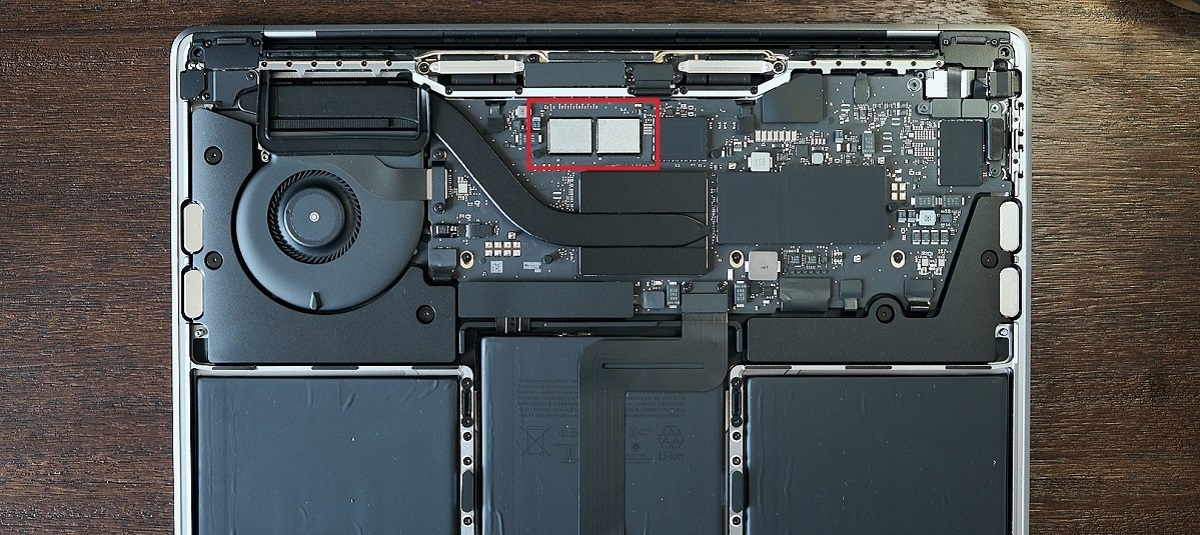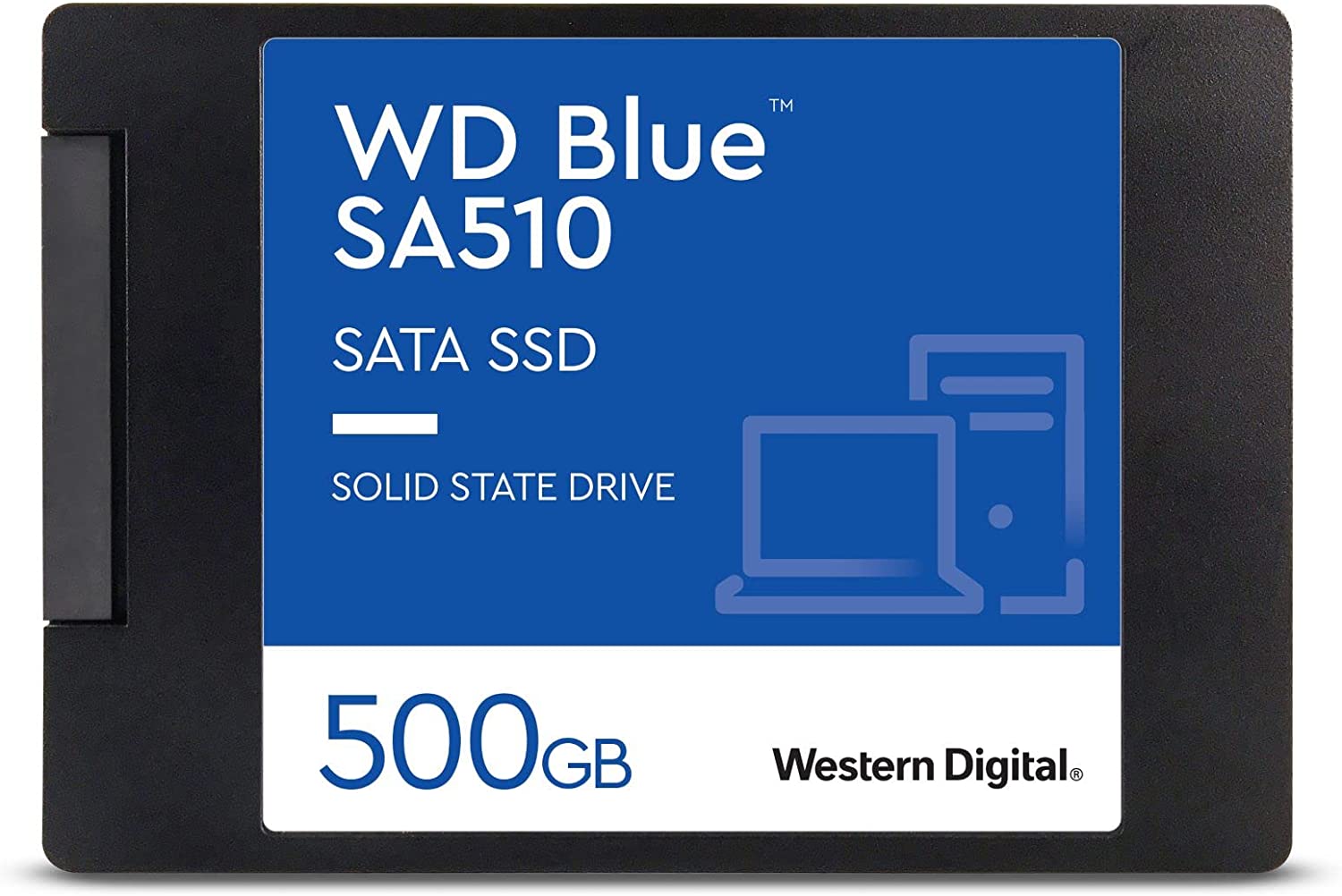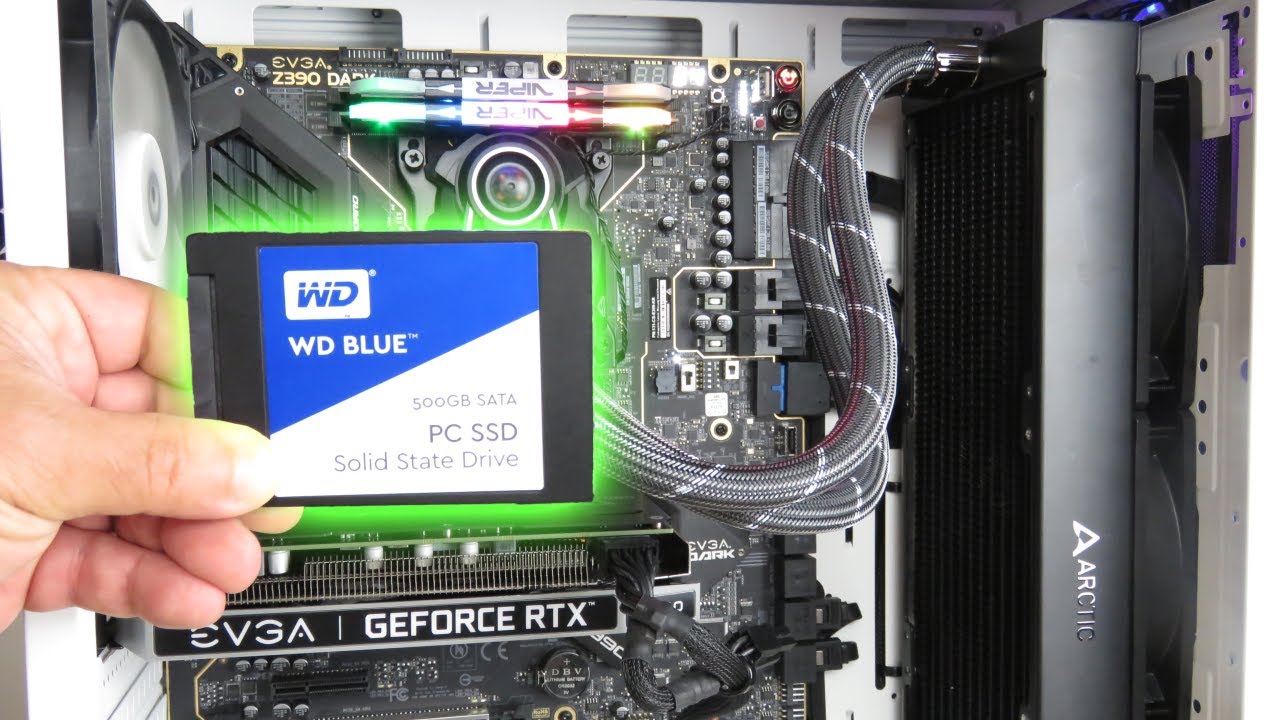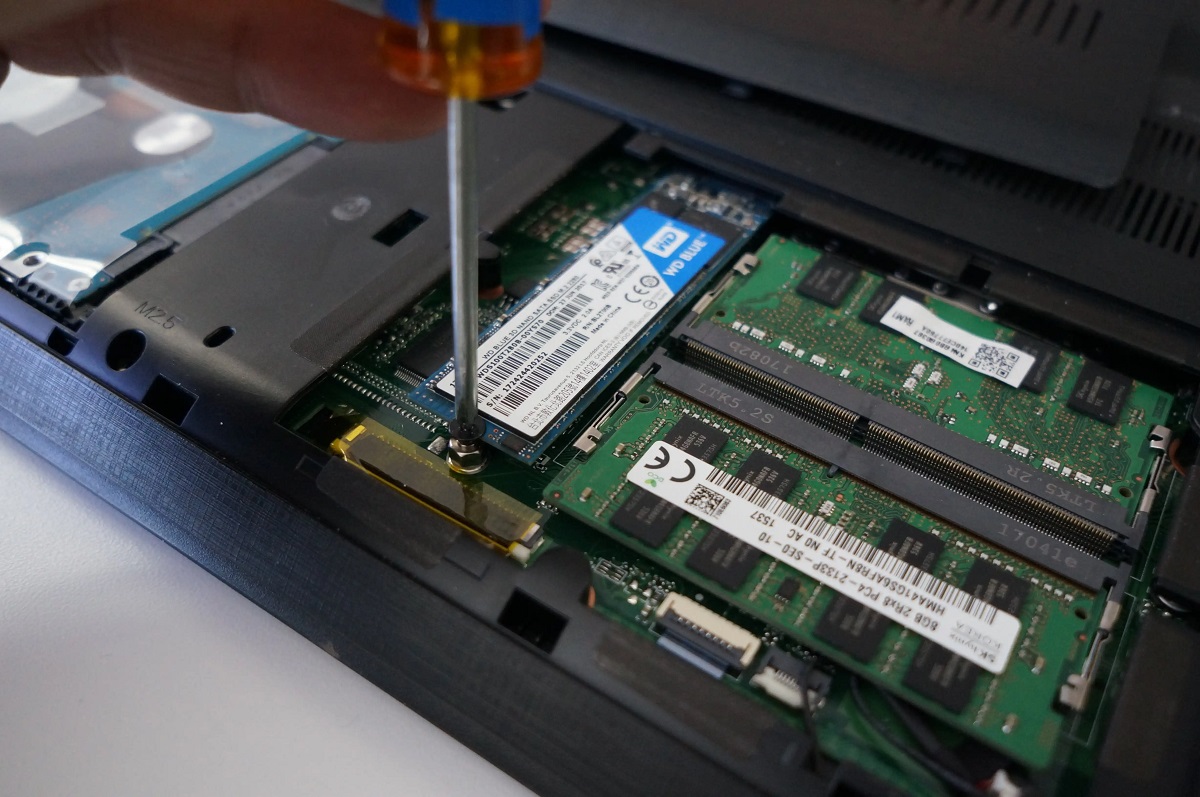Introduction
SSD, which stands for Solid State Drive, has become increasingly popular in recent years as a storage solution for computers and other electronic devices. With its blazing-fast speed and reliability, SSD has revolutionized the way data is stored and accessed. In this article, we will delve into the inner workings of an SSD and explore how it differs from traditional hard disk drives (HDD).
Unlike HDDs, which use spinning disks and moving read/write heads to access data, SSDs utilize a different technology that relies on solid-state memory. This brings numerous advantages, such as faster data transfer rates, lower power consumption, and enhanced durability. As a result, SSDs have become the go-to choice for gamers, professionals, and everyday consumers who desire a superior computing experience.
In this article, we will discuss the components that make up an SSD and shed light on the key processes involved in its functioning. Additionally, we will examine the advantages and disadvantages of SSDs to provide a comprehensive understanding of this cutting-edge technology.
What is an SSD?
An SSD, or Solid State Drive, is a type of storage device that uses flash memory to store and retrieve data. Unlike traditional hard disk drives (HDD), which rely on spinning disks and moving read/write heads, an SSD has no mechanical parts. This makes SSDs faster, more reliable, and less susceptible to physical damage.
SSDs are composed of several integrated components, including NAND flash memory, controllers, and DRAM cache. These components work together to store and retrieve data quickly and efficiently.
NAND flash memory is the primary storage component in an SSD. It is a type of non-volatile memory that retains data even when the power is turned off. NAND flash memory is organized into blocks, pages, and cells, and each cell can store multiple bits of data. This allows for high-density storage and fast data access.
The controller is the brain of the SSD. It manages the flow of data between the computer and the NAND flash memory. The controller is responsible for tasks such as error correction, wear leveling, and garbage collection, ensuring that data is stored and retrieved accurately and efficiently.
DRAM cache is another important component in an SSD. It acts as a buffer between the controller and the NAND flash memory, temporarily storing frequently accessed data to improve performance. DRAM cache helps reduce latency and improves the overall speed of the SSD.
Overall, SSDs offer several advantages over HDDs. They provide faster boot times, quicker application loading, and faster file transfers. Additionally, SSDs are more durable and energy-efficient, making them ideal for laptops and portable devices.
However, there are a few limitations to consider when using an SSD. First, SSDs tend to have a higher price per storage compared to HDDs. Additionally, SSDs have a limited lifespan as the NAND flash memory can only endure a certain number of write cycles. However, advancements in technology have significantly improved the lifespan of SSDs, making them a viable long-term storage solution for most users.
Components of an SSD
An SSD is a complex storage device that consists of several key components working together to provide fast and reliable data storage. Understanding these components is crucial to grasp how an SSD operates and delivers its impressive performance.
1. NAND Flash Memory: NAND flash memory is the primary storage component in an SSD. It is a type of non-volatile memory that retains data even when the power is turned off. NAND flash memory is organized into blocks, pages, and cells, with each cell capable of storing multiple bits of data. This allows for efficient and high-density data storage.
2. Controllers: The controller serves as the central processing unit of an SSD. It is responsible for managing data flow, error correction, wear leveling, and other key tasks. The controller communicates with the computer system, translates requests into actions, and ensures the proper functioning of the SSD.
3. DRAM Cache: The DRAM cache is a small portion of volatile memory (DRAM) used by the controller as a temporary buffer. It stores frequently accessed data, providing faster and more efficient access. The DRAM cache helps improve the overall performance of the SSD by reducing latency and minimizing the time spent on data retrieval.
4. Interface: The interface is the connection between the SSD and the computer system. There are different types of interfaces used in SSDs, such as SATA (Serial ATA) and NVMe (Non-Volatile Memory Express). SATA is the most common interface, offering good performance for everyday tasks. NVMe, on the other hand, is a newer and faster interface specifically designed for SSDs, providing significantly higher data transfer speeds.
5. Power Loss Protection: Many modern SSDs include power loss protection mechanisms to prevent data loss during sudden power outages or system failures. These mechanisms ensure that data in the SSD’s volatile memory (DRAM cache) is written to the non-volatile NAND flash memory, maintaining data integrity even in unexpected situations.
Overall, these components work together to make an SSD a highly efficient and reliable storage solution. By leveraging NAND flash memory, controllers, DRAM cache, and advanced interfaces, SSDs deliver fast data transfer rates, low latency, and improved system responsiveness compared to traditional hard disk drives.
NAND Flash Memory
NAND flash memory is a crucial component of solid-state drives (SSDs) and other electronic devices. It serves as the primary storage medium in an SSD, providing fast and reliable data storage. Understanding NAND flash memory is essential for comprehending the inner workings of an SSD.
NAND flash memory is a type of non-volatile memory, meaning it retains data even when the power is turned off. This is in contrast to volatile memory like RAM, which loses data when power is disconnected. This characteristic makes NAND flash memory ideal for long-term data storage.
The structure of NAND flash memory consists of blocks, pages, and cells. Each block is made up of multiple pages, and each page is composed of multiple cells. These cells are further divided into floating-gate transistors that store electrical charges to represent binary data. The most common type of NAND flash memory cell is the “multi-level cell” (MLC), which can store multiple bits of data in a single cell.
One of the key advantages of NAND flash memory is its high density storage capability. With advancements in technology, NAND flash memory allows for packing a large amount of data in a compact space. This makes SSDs more space-efficient compared to traditional hard disk drives (HDDs) that rely on spinning disks.
When it comes to performance, NAND flash memory excels in providing fast data access speeds. It offers significantly lower latency and faster random read/write operations compared to mechanical HDDs. This results in quicker boot times, faster application loading, and improved overall system responsiveness.
However, NAND flash memory also has its limitations. One of the main challenges is the limited lifespan of the cells. With each write operation, the floating-gate transistors gradually wear out. Manufacturers use techniques like “wear leveling” to distribute write operations evenly across the cells, extending the lifespan of the SSD. Additionally, newer generations of NAND flash memory, such as Triple-Level Cell (TLC) and Quad-Level Cell (QLC), offer higher density but have a lower endurance compared to MLC.
In summary, NAND flash memory plays a critical role in the functioning of SSDs. Its non-volatile nature, high density storage, and fast data access speeds make it a reliable and efficient storage medium. Despite its limited lifespan, NAND flash memory continues to evolve, offering new advancements and improvements in the world of data storage technology.
Controllers
Controllers are a vital component in solid-state drives (SSDs) that act as the brains of the operation. They play a crucial role in managing the flow of data between the computer system and the NAND flash memory, ensuring efficient and reliable storage and retrieval of data.
Controllers perform a range of tasks to optimize the performance of an SSD. One of their main responsibilities is error correction. As data is written and read from the NAND flash memory, errors can occur. Controllers employ various error correction algorithms to detect and correct these errors, ensuring data integrity and reliability.
Wear leveling is another critical function performed by controllers. NAND flash memory has a limited lifespan as each write operation gradually wears out the floating-gate transistors. Controllers distribute write operations evenly across the cells to prevent premature wear on specific areas. This technique helps prolong the overall lifespan of the SSD and ensures the even usage of memory cells.
Garbage collection is another task handled by the controller. When files are deleted from an SSD, the NAND flash memory still contains remnants of that data. Garbage collection involves identifying and reclaiming these unused blocks, preparing them for future writes. This process helps maintain the SSD’s performance and efficiency over time.
Controllers also play a critical role in managing the data organization within an SSD. They handle tasks such as wear leveling, bad block management, and logical-to-physical mapping. These processes ensure that data is stored and retrieved efficiently, optimizing performance and preventing data corruption.
Moreover, controllers facilitate data transfer between the computer system and the SSD. They support various interface protocols, such as SATA (Serial ATA) and NVMe (Non-Volatile Memory Express), enabling fast and reliable communication. Additionally, controllers contribute to maximizing the bandwidth of the interface, further enhancing the overall performance of the SSD.
As technology advances, controllers continue to evolve, offering improved performance and more advanced features. Some controllers incorporate cache management algorithms to optimize the use of the DRAM cache, enhancing overall system responsiveness. Others may support encryption capabilities, providing data security features for sensitive information.
In summary, controllers are a critical component in SSDs that ensure efficient data storage and retrieval. Their tasks include error correction, wear leveling, garbage collection, and managing data organization within the SSD. By effectively managing these functions, controllers contribute to the fast, reliable, and durable performance of SSDs in various computing environments.
DRAM Cache
DRAM cache, or Dynamic Random Access Memory cache, is a crucial component in solid-state drives (SSDs) that plays a significant role in enhancing their performance. Acting as a temporary storage buffer between the controller and the NAND flash memory, the DRAM cache improves data access speed and overall responsiveness of the SSD.
The DRAM cache works by temporarily storing frequently accessed data, allowing for faster retrieval when needed. It acts as a high-speed memory buffer that holds data that the controller anticipates will be accessed in the near future. This helps reduce latency and minimizes the time spent on data retrieval, resulting in improved system performance.
One of the key advantages of having a DRAM cache is its ability to optimize read and write operations. By storing frequently accessed data in the cache, the SSD can quickly retrieve the data instead of accessing it directly from the NAND flash memory, which can be slower. This improves the overall speed of data transfer, including boot times, application loading times, and file transfer speeds.
DRAM cache not only enhances read performance but also can improve write performance by buffering and optimizing write operations. When data is written to the SSD, it is initially stored in the DRAM cache. The controller then organizes and reorganizes the data blocks to optimize the placement on the NAND flash memory, reducing fragmentation and improving the efficiency of writes.
However, it is important to note that the DRAM cache is volatile memory, meaning it requires power to maintain data. In the event of a power failure or system shutdown, the data in the DRAM cache may be lost. To mitigate the risk of data loss, many SSDs incorporate power loss protection mechanisms. These mechanisms ensure that data in the volatile memory is written to the non-volatile NAND flash memory, maintaining data integrity even in unexpected situations.
The size of the DRAM cache can vary depending on the SSD model and capacity. Higher-end SSDs typically have larger DRAM caches, allowing for more significant amounts of frequently accessed data to be stored. This, in turn, enhances the performance benefits provided by the DRAM cache.
In summary, the DRAM cache plays a crucial role in optimizing the performance of SSDs. By temporarily storing frequently accessed data, the DRAM cache improves read and write operations, resulting in faster data transfer and enhanced overall system responsiveness. While volatile, the DRAM cache is an essential component that contributes to the efficient functioning of SSDs in various computing environments.
SATA vs. NVMe
When it comes to solid-state drives (SSDs), there are two common interface options available: SATA (Serial ATA) and NVMe (Non-Volatile Memory Express). These interfaces dictate how the SSD communicates with the computer system and impact its performance capabilities. Understanding the differences between SATA and NVMe is crucial in determining the optimal choice for your storage needs.
SATA has been the traditional interface used in SSDs for many years. It was originally designed for hard disk drives (HDDs) but has been adapted for SSDs. SATA interfaces have undergone several iterations, with SATA III being the most widely used version. SATA interfaces offer good performance for everyday computing tasks and are compatible with most computers.
On the other hand, NVMe is a newer and more advanced interface specifically designed for SSDs. It takes advantage of the low latency and high bandwidth capabilities of PCIe (Peripheral Component Interconnect Express) technology. NVMe interfaces significantly outperform SATA interfaces and are often used in high-performance computing applications.
One of the key differentiators between SATA and NVMe is the data transfer speed. SATA interfaces typically offer sequential read and write speeds of up to 6 gigabits per second (Gbps) with SATA III, while NVMe interfaces can provide much higher speeds, ranging from 32 Gbps to over 2 terabits per second (Tbps). This translates to significantly faster boot times, quicker application loading, and rapid file transfers with NVMe.
In terms of latency, NVMe interfaces have a distinct advantage. NVMe operates with significantly lower latency compared to SATA, resulting in faster response times. This makes NVMe ideal for applications that require high-speed data access, such as gaming or video editing.
Another notable difference between SATA and NVMe is the number of available PCIe lanes. SATA interfaces use a single PCIe lane, limiting the bandwidth and performance potential. NVMe, on the other hand, can leverage multiple PCIe lanes, allowing for greater scalability and improved performance for demanding workloads.
While NVMe offers impressive performance enhancements, it is important to note that it requires a compatible motherboard with an M.2 or PCIe slot to take full advantage of its capabilities. Systems without NVMe support will require an adapter or an SSD with SATA compatibility.
In summary, SATA and NVMe are two distinct interfaces available for SSDs. SATA interfaces offer good performance for everyday computing tasks and are widely compatible, while NVMe interfaces provide significantly faster data transfer speeds and lower latency, making them ideal for high-performance applications. Understanding your specific requirements and the capabilities of your system will help determine the best choice between SATA and NVMe for your storage needs.
How Does an SSD Work?
An SSD (Solid State Drive) works by using flash memory to store and retrieve data. Unlike traditional hard disk drives (HDD) that rely on spinning disks, an SSD has no moving parts, resulting in faster access times and improved reliability.
The process begins with data input, where the computer sends instructions and data to the SSD. This can include reading and writing files, accessing applications, or transferring data between the computer system and the SSD.
Once the data is received, the SSD’s controller takes charge. The controller is responsible for managing the flow of data between the computer and the NAND flash memory, which is the primary storage component of the SSD.
The controller organizes the data into logical blocks, assigns addresses to each block, and manages the overall data organization within the SSD. It also performs error correction, wear leveling, garbage collection, and other essential functions to ensure data integrity and optimal performance of the SSD.
After the controller has organized the data, it is stored in the NAND flash memory. NAND flash memory is a type of non-volatile memory that retains data even when power is turned off. It is organized into blocks, pages, and cells, with each cell capable of storing multiple bits of data.
When the data needs to be retrieved, the controller locates the requested data based on the assigned addresses. The individual cells within the NAND flash memory are accessed, and the data is retrieved and sent back to the computer system for processing or display.
One key factor in the performance of an SSD is its read and write speeds. SSDs generally have faster read speeds compared to write speeds. This is due to the way the data is stored and accessed within the NAND flash memory.
It is important to note that the speed of an SSD can vary depending on various factors like the quality and type of NAND flash memory used, the efficiency of the controller, and the interface (SATA or NVMe).
In summary, an SSD works by utilizing a controller to manage the flow of data between the computer system and the NAND flash memory. The data is organized, stored, and retrieved within the NAND flash memory, which provides faster access times and improved reliability compared to traditional HDDs.
Step 1: Data Input
The first step in the functioning of an SSD (Solid State Drive) is data input. This step involves the transfer of instructions and data from the computer system to the SSD for storage or retrieval.
When a user performs actions like creating, opening, modifying, or deleting files, or when an application requires access to stored data, the computer system sends the necessary instructions and data to the SSD. This data input can occur through various methods, such as direct file transfer, write operations initiated by the operating system, or read operations initiated by software applications.
For example, when you save a document or download a file, the computer system sends the data to the SSD for storage. Similarly, when you open a file or launch an application, the SSD retrieves the required data and sends it back to the computer system for processing or display.
During this data input process, the SSD’s controller plays a crucial role. The controller receives the incoming data and manages the flow of data between the computer system and the NAND flash memory, which is the primary storage component of the SSD. It ensures that the data is properly organized, stored, and retrieved, maintaining data integrity and optimizing performance.
It is important to note that the speed of data input can vary based on several factors. This includes the quality and type of NAND flash memory used in the SSD, the efficiency of the controller, and the interface through which the data is transferred, such as SATA or NVMe.
By efficiently handling data input, SSDs can provide faster boot times, quicker application loading, and improved overall system responsiveness compared to traditional hard disk drives (HDDs). The absence of moving parts in SSDs also contributes to their faster data input speeds, as there is no mechanical delay involved in accessing data from spinning disks.
In summary, data input is the first step in the functioning of an SSD. The computer system sends instructions and data to the SSD, which is then handled by the controller and stored in the NAND flash memory. The efficiency of data input plays a significant role in determining the overall performance and speed of an SSD.
Step 2: Data Organization
After the data input, the second step in the functioning of an SSD (Solid State Drive) is data organization. This step involves the management and arrangement of data within the SSD for optimal storage and retrieval efficiency.
Once the data is received from the computer system, it is the responsibility of the SSD’s controller to organize the data. The controller performs various tasks to ensure that the data is stored and retrieved in the most efficient manner possible.
One of the key tasks performed during data organization is block management. The NAND flash memory, which is the primary storage component of the SSD, is divided into blocks, each consisting of multiple pages. The controller manages these blocks, keeping track of their usage and determining the allocation of new data.
The controller also performs wear leveling. NAND flash memory has a limited lifespan, and repeated write operations to the same cells can cause them to deteriorate faster. Wear leveling redistributes data across different blocks and cells, ensuring that write operations are evenly distributed. This helps extend the lifespan of the SSD and prevent specific cells from wearing out prematurely.
Additionally, the controller handles bad block management. Over time, some blocks within the NAND flash memory may become unreliable or defective. The controller keeps track of these bad blocks and utilizes spare blocks to replace them, ensuring the integrity and performance of the SSD.
The controller also performs logical-to-physical address mapping. When data is written to the SSD, it is stored in specific physical locations within the NAND flash memory. The controller creates an address table that links the logical address of the data requested by the computer system to the physical address where it is stored. This mapping allows for efficient retrieval of data during read operations.
Efficient data organization is essential for optimizing the performance of an SSD. By managing blocks, performing wear leveling and bad block management, and maintaining logical-to-physical address mapping, the controller ensures that data is stored and retrieved efficiently. This results in faster access times, improved overall system responsiveness, and enhanced durability of the SSD.
In summary, data organization is the second step in the functioning of an SSD. The controller handles tasks such as block management, wear leveling, bad block management, and logical-to-physical address mapping. These processes ensure efficient storage and retrieval of data, resulting in improved performance and longevity of the SSD.
Step 3: Data Storage
The third step in the functioning of an SSD (Solid State Drive) is data storage. Once the data has been organized by the controller, it is stored in the NAND flash memory, which serves as the primary storage component of the SSD.
The NAND flash memory in an SSD is organized into blocks, pages, and cells. Each block consists of multiple pages, and each page contains multiple cells. The cells within the NAND flash memory are responsible for storing the binary data as electrical charges.
When the controller receives the organized data, it determines the appropriate blocks and pages within the NAND flash memory for storing the data. The data is then written to these specific locations.
One of the key advantages of using NAND flash memory for data storage is its non-volatile nature. Once the data is written to the cells, it remains stored even when the power is turned off. This means that the SSD can retain the data for extended periods without the need for continuous power supply.
The NAND flash memory in SSDs typically uses multi-level cell (MLC) or triple-level cell (TLC) technology, which allows each cell to store multiple bits of data. This enables higher data density and capacity within the limited physical space of an SSD.
The efficiency of data storage is enhanced by the controller’s management of the NAND flash memory. The controller performs tasks such as block management, wear leveling, and bad block management to ensure the even distribution of data and mitigate potential issues that could impact performance and data integrity.
It is important to note that the speed and efficiency of data storage can be influenced by various factors. The quality and type of NAND flash memory, the performance capabilities of the SSD’s controller, and the interface through which the data is transferred (such as SATA or NVMe) all contribute to the overall performance of data storage in an SSD.
In summary, data storage is the third step in the functioning of an SSD. The controller determines the appropriate locations within the NAND flash memory for storing the data. The non-volatile nature of NAND flash memory, combined with the controller’s management, ensures efficient and reliable data storage in an SSD.
Step 4: Data Retrieval
The final step in the functioning of an SSD (Solid State Drive) is data retrieval. After the data has been stored in the NAND flash memory, the SSD’s controller is responsible for retrieving the requested data and sending it back to the computer system.
When the computer system requires specific data, such as opening a file or launching an application, it sends a read request to the SSD. The controller then locates the requested data within the NAND flash memory based on the logical-to-physical address mapping established during the data organization step.
Upon locating the data, the controller retrieves it and transfers it back to the computer system for processing or display. This retrieval process involves accessing the individual cells within the NAND flash memory and extracting the stored binary data.
The efficient retrieval of data is a result of the SSD’s design and the controller’s optimization. SSDs provide faster access times compared to traditional hard disk drives (HDDs) due to their lack of moving parts. Without the need for mechanical movements, data can be retrieved almost instantly, resulting in quicker response times and improved system performance.
The performance of data retrieval can also be influenced by other factors such as the quality and type of NAND flash memory used in the SSD, the efficiency of the SSD’s controller, and the interface through which the data is transferred (e.g., SATA or NVMe).
The speed and efficiency of data retrieval are crucial for tasks that require quick access to data, such as gaming, multimedia editing, and real-time applications. SSDs excel in these scenarios, providing fast read performance that enhances the overall user experience.
It’s important to note that while SSDs offer impressive speed and responsiveness, the actual data retrieval speed can vary based on factors such as file size, fragmentation, and the workload on the SSD.
In summary, data retrieval is the final step in the functioning of an SSD. The SSD’s controller locates and retrieves the requested data from the NAND flash memory, providing fast access times and improved system performance. The design of the SSD, the quality of the NAND flash memory, and the efficiency of the controller all contribute to the speed and efficiency of data retrieval in an SSD.
Advantages of SSDs
SSDs (Solid State Drives) offer numerous advantages over traditional hard disk drives (HDDs) that make them a popular choice for storage in various computing devices. Here are some of the key advantages of SSDs:
- 1. Faster Performance: SSDs provide significantly faster performance compared to HDDs. The absence of moving parts allows for quicker access times, faster data transfer rates, and improved system responsiveness. SSDs can greatly enhance boot times, application loading times, and file transfer speeds, resulting in a smoother and more efficient computing experience.
- 2. Reliability and Durability: Since SSDs do not have any mechanical components, they are less susceptible to physical damage caused by drops or vibrations. Moreover, they can withstand a wide range of temperatures, making them more reliable for operation in various environments. With their robust design, SSDs are more durable and less prone to failure compared to HDDs.
- 3. Energy Efficiency: SSDs consume less power than HDDs, making them more energy-efficient. This is particularly advantageous for laptops and portable devices, where battery life is a crucial factor. The lower power consumption of SSDs also translates into reduced heat generation, resulting in cooler and quieter operation.
- 4. Silent Operation: SSDs operate silently as they do not have any moving parts. Unlike HDDs, which produce noise due to the spinning disks and moving read/write heads, SSDs provide a noise-free computing experience, contributing to a quieter working environment.
- 5. Compact Size: SSDs have a smaller and more compact form factor compared to HDDs. This makes them ideal for slim devices such as ultrabooks, tablets, and smartphones, where space is limited. SSDs offer a higher storage capacity within a smaller physical footprint, allowing for more efficient utilization of space in electronic devices.
- 6. Reduced Seek Time and Latency: SSDs have minimal seek time and latency due to the absence of mechanical movements. This results in faster data access and reduced waiting time for the retrieval of information, improving overall system performance.
These advantages of SSDs contribute to enhanced productivity, improved user experience, and better system performance. As technology advances, SSDs continue to evolve, providing even faster speeds, higher capacities, and improved reliability.
Disadvantages of SSDs
While there are numerous advantages, it’s important to consider the potential disadvantages of SSDs (Solid State Drives) as well. Here are some key factors to keep in mind:
- 1. Cost: SSDs tend to be more expensive than traditional hard disk drives (HDDs) on a cost-per-gigabyte basis. The higher price point of SSDs can make them less accessible for users who require large storage capacities.
- 2. Limited Lifespan: SSDs have a limited lifespan, typically measured in total bytes written (TBW) or drive writes per day (DWPD). Each cell within the NAND flash memory can endure only a certain number of write cycles before it becomes less reliable. However, it’s worth noting that modern SSDs have significantly improved lifespans and endurance levels compared to earlier generations.
- 3. Capacity Constraints: SSDs generally offer lower capacities compared to HDDs, especially when considering cost. While SSD capacities have been increasing, if you require vast amounts of storage for large files or extensive data, HDDs may still provide a more cost-effective solution.
- 4. Write Performance Degradation: Over time, the performance of SSDs can degrade, particularly during intensive write operations. This is due to how NAND flash memory works, as data must be erased in entire blocks before new data can be written. This can result in slower write speeds as the drive fills up and requires more complex management processes.
- 5. Collateral Damage: In the event of a power loss or an abrupt system shutdown, there is a risk of data loss or corruption. While power loss protection mechanisms are now commonly implemented in modern SSDs, unexpected power failure during write operations can still lead to potential issues.
- 6. Inefficient for Large, Sequential Writes: While SSDs excel in random read/write operations, they may not perform as efficiently as HDDs when it comes to large, sequential writes, such as in continuous video capturing or massive file transfers. HDDs, with their sequential data access capability, may still be more suitable for such specific workloads.
Despite these disadvantages, SSDs continue to be favored for their overall performance, speed, and reliability. The ongoing advancements in technology are consistently addressing many of these concerns, gradually bridging the gap between SSDs and traditional HDDs.
Conclusion
SSDs (Solid State Drives) have revolutionized the storage industry, offering a range of advantages over traditional hard disk drives (HDDs). With their faster performance, reliability, energy efficiency, and compact size, SSDs have become the preferred choice for many computing devices.
SSDs leverage the use of NAND flash memory, which allows for faster data access times and improved system responsiveness. The efficient organization and retrieval of data within an SSD rely on the capabilities of the controller, ensuring optimal performance and data integrity.
Despite the advantages, it’s important to consider the potential drawbacks of SSDs. Factors such as cost, limited lifespan, capacity constraints, write performance degradation, potential data loss during power failure, and inefficiency for large, sequential writes may impact the decision to choose an SSD over an HDD.
However, as technology continues to advance, many of these disadvantages are being addressed and minimized. The lifespan of SSDs has been significantly improved, larger capacities are becoming more accessible, and power loss protection mechanisms are being implemented to safeguard data.
Ultimately, the choice between SSDs and HDDs depends on individual needs and priorities. SSDs are ideal for those seeking faster performance, reliability, and energy efficiency, especially in applications that require quick data access. HDDs, on the other hand, may still be suitable for those who require large storage capacities at a more affordable cost.
In conclusion, SSDs have brought about significant advancements in data storage technology, offering faster speeds, enhanced durability, and improved user experience. As SSD technology continues to evolve, we can expect further innovations that will continue to push the boundaries of storage performance and reliability.







